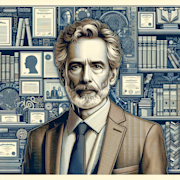The Symbolism in Ernest Hemingways The Sun Also Rises

Ernest Hemingway’s novel, The Sun Also Rises, is widely regarded as a masterpiece of modernist literature. Published in 1926, the novel traces the journey of a group of disillusioned expatriates as they search for meaning in post-World War I Europe. One of the most notable aspects of Hemingway’s writing is his effective use of symbolism. Through various symbols, Hemingway captures the essence of the Lost Generation and explores themes like masculinity, the impact of war, and the absence of traditional values. In this blog post, we will delve into the symbolism present in The Sun Also Rises and unravel the layers of meaning behind them.
1. The Bullfight: Symbolizing Masculinity and Impotence
The bullfight, a central motif in The Sun Also Rises, serves as a powerful symbol that encapsulates both the façade of masculinity and the underlying impotence of the characters. The passion and bravery displayed by the matadors, such as Pedro Romero, represent the archetypal male heroism. However, beneath their surface masculinity lies a sense of powerlessness and emasculation. The characters in the novel, particularly the protagonist Jake Barnes, are physically and emotionally wounded as a result of their experiences in World War I. Like the bulls in the ring, they are rendered impotent, unable to fulfill both their sexual desires and their quest for a sense of purpose.
2. Alcohol: Symbolizing Escapism and Self-Destruction
Alcohol functions as a pervasive symbol in The Sun Also Rises, representing the characters’ desperate attempt to escape the harsh realities of their lives. The excessive consumption of alcohol is used as a means to numb their emotional pain, fill the void left by the war, and momentarily forget their disillusionment. The characters are often seen drinking excessively, engaging in what seems like a perpetual cycle of drunkenness followed by moments of clarity and self-reflection. However, this pursuit of escapism serves only to exacerbate their problems, leading them further down a path of self-destruction and perpetuating their sense of emptiness and aimlessness.
3. The Sun: Symbolizing Illusion and Faded Glory
The title of the novel, The Sun Also Rises, holds significant symbolism. The sun represents the elusive concept of hope, the possibility of new beginnings, and the resurrection of life. However, through Hemingway’s use of symbolism, the sun also represents the illusory nature of these aspirations. The characters continuously seek refuge and purpose in the sun-drenched landscapes of Spain, hoping to find solace and a renewed sense of self. Yet, despite the optimistic connotations of the title, the sun rising becomes a cycle of repetition, mirroring the cyclical nature of their lives and their inability to escape the despair that haunts them.
4. The Wounded Characters: Symbolizing the Impact of War
The characters in The Sun Also Rises are all deeply affected by the repercussions of World War I. Their physical injuries and emotional scars represent the profound impact of war on individuals and society as a whole. Jake Barnes, in particular, is emasculated by a war wound that renders him impotent. This physical wound serves as a symbol of the invisible scars that the war inflicted upon an entire generation. The characters’ disillusionment, their search for meaning, and their inability to form substantial relationships all stem from the trauma they experienced, highlighting the profound and lasting effects of war.
5. The Absence of Traditional Values: Symbolizing Lost Identity
Throughout the novel, Hemingway explores the theme of the Lost Generation, a term he popularized. The absence of traditional values is symbolized in various ways, reflecting the profound shift in societal norms and the loss of identity experienced by the characters. The aimless pursuit of pleasure, the dissolution of conventional gender roles, and the rejection of traditional relationships all underscore the deep sense of disillusionment and purposelessness that define the Lost Generation. Hemingway’s use of these symbols effectively captures the struggles faced by individuals in a world stripped of its previous certainties.
In conclusion, Ernest Hemingway masterfully employs symbolism in The Sun Also Rises to convey the struggles and disillusionment experienced by the Lost Generation. With symbols such as the bullfight, alcohol, the sun, the wounded characters, and the absence of traditional values, Hemingway weaves a complex tapestry of meaning that sheds light on the profound impact of war, the search for identity, and the fleeting nature of purpose. His use of symbolism elevates the novel to a work that resonates with readers, as it explores universal themes that extend beyond the context of the post-World War I era. The Sun Also Rises exemplifies Hemingway’s literary genius, demonstrating his ability to capture the essence of a generation and provide insight into the human condition.

Johnathan Evans
Journalist
More From Classics Authority Books

Book
The Agony and the Ecstasy: Michelangelo and Irving Stone's Artistic Tribute

Book
The Handmaid's Tale by Margaret Atwood

Book
20,000 Leagues Under the Sea by Jules Verne

Book
All Quiet on the Western Front by Erich Maria Remarque

Book
The Mythical World of Tolkien: Beyond The Lord of the Rings

Book
Bridging Generations: How Little Women Continues to Inspire





